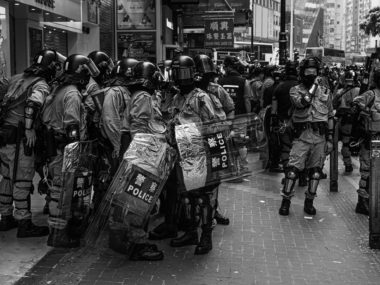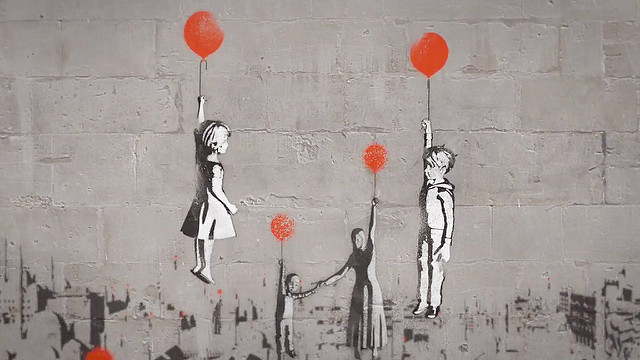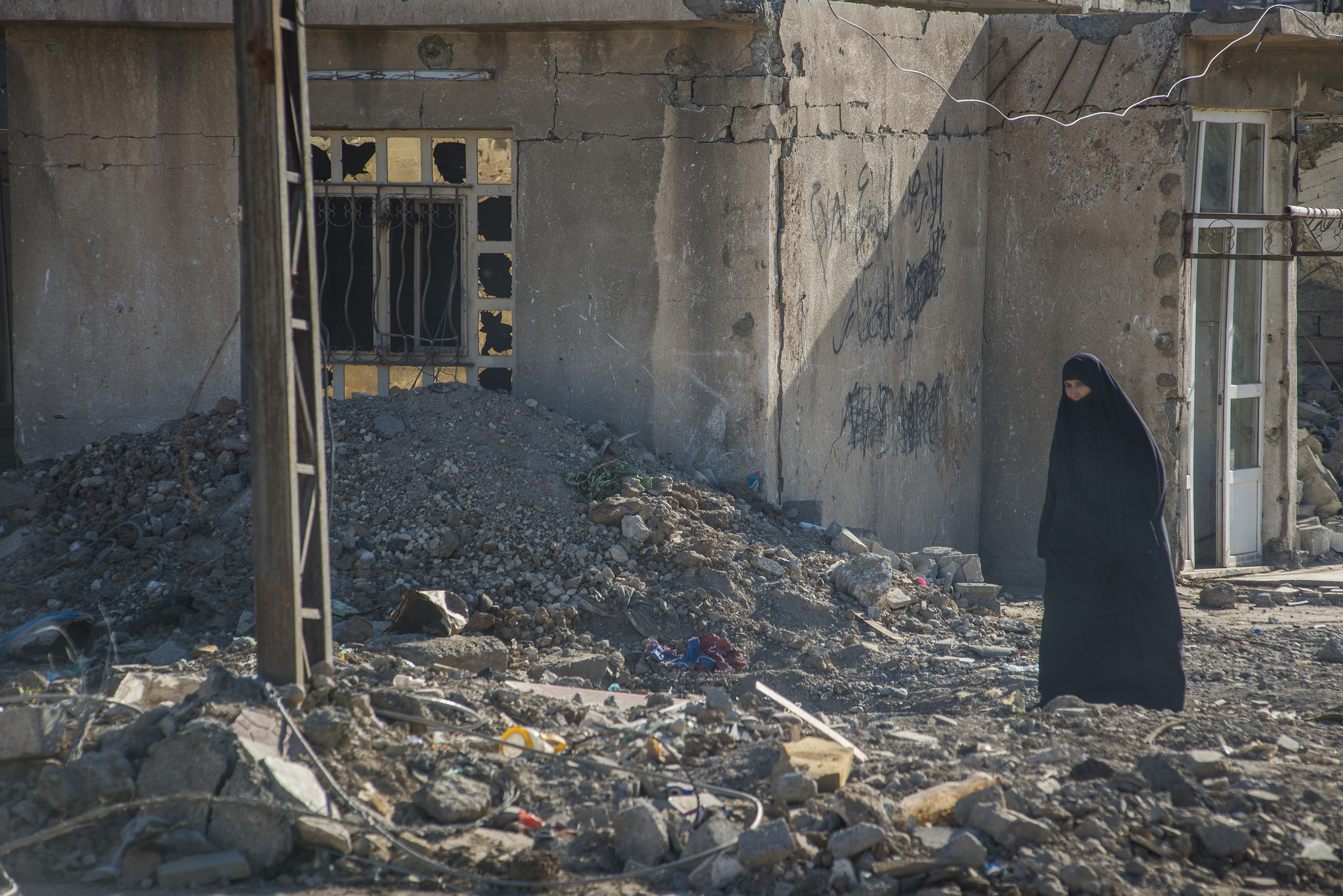
Food has always been a potent symbol of international politics. Images of Soviet-era bread lines or of Syrian bakeries being shelled come to mind. Food incites something deep within each of us. As Yotam Ottolenghi and Sami Tamimi, a Jewish and Palestinian chef respectively, note in Jerusalem: A Cookbook. “There is something about the heated, highly animated spirit of the city’s residents that creates unparalleled delicious food.”
Indeed, food has always enjoyed a fond, almost sacred place during wartime (beyond the MRE). Remember the old subway ads calling for conservation by the U.S. government declared: “Food will win the war! We observe Meatless days, Wheatless days, Porkless days [sic].” Yet food is also a weapon of war. It’s no secret why during its recent conflicts, Russia banned Georgian wine or Polish sausage, or why it sent health inspectors to shut down its McDonalds in Moscow.
Food can also be taboo to talk about. A New Yorker writer was briefly detained and interrogated for asking too many questions about bread prices in Tehran. Anthony Bourdain, host of CNN’s Parts Unknown, got into trouble with Egyptian police after trying to shoot a segment on ful, the street food Egyptians gorge on.
In my past life as a freelance reporter based in post-conflict countries, I used to think there was a direct relationship between war-torn places and good cuisine. Maybe an inventive menu was a sign of ethnically diverse cultures, which may be synonymous with internecine conflict. Conflict zones, after all, tend to bestride former empires. Or perhaps the horror of war is what lends itself to good food – as a form of culinary escapism.
The tastiest kebabs I’ve tried are in Aleppo (in a former merchant guesthouse since leveled during the war). Which should come as no surprise: Syria sits at a cultural crossroads — its cuisine benefits from Ottoman, Armenian, Jewish, and French influences. That would also explain why the best falafel in Jordan, at least according to aid workers there, is in a Syrian refugee camp. I remember sampling the best cheese and wine I’d ever tried in Tbilisi shortly after Georgia’s 2008 war with Russia. That makes sense – Georgia has been invaded by the Mongols, the Persians, the Turks.
Blander food conversely seems to go hand in hand with peace and stability. Until Rene Redzepi’s Noma lit up the latest New Nordic foodie craze, peace in northern Europe corresponded with a dull and unpredictable diet of meat and potatoes. The Balkans may be a less stable place, but anybody who’s tried a cevapi in Sarajevo can say that Bosnian cuisine is anything but bland. I have fond memories of my trip last year to Tanzania – a country at relative peace since a border scuffle with Burundi in 1996 – but tasting its native cuisine was not one of them. Ethiopia, which has seen no shortage of war and conflict, boasts perhaps the continent’s best food.
For whatever reason, good native food also tends to correlate with a dislike of America, not just in France but also among countries like Cuba, Venezuela, China, and Iran. In Pittsburgh, a restaurant that calls itself Conflict Kitchen serves only dishes from “rogue” states – think Cuban tostones or Persian-style kebab. The owners even inadvertently waded into the Middle East conflict after recently featuring native food from “Palestine,” which sparked protests from pro-Israel Americans.
Perhaps a byproduct of world peace might be blander, or at least more commoditized and risk-averse, cuisines. Or maybe we should deploy peacekeepers to places based on their number of Michelin stars. The State Department, after all, recently created what it calls its “Chef Corps,” a program that dispatches top chefs abroad to carry out “culinary diplomacy.”
The idea of, say, Tom Colicchio or Gordon Ramsay hammering out a nuclear agreement with some anti-American ayatollah may not be a bad idea. Chefs are everything diplomats are not: brash, independent, blunt, creative – just what we need in good ambassadors. Let’s send Guy Fieri to North Korea.
Food is strangely both an enabler of peace yet also a divider of countries, a way to elevate one’s culture as well as a cudgel to punish one’s enemy. As Ottolenghi and Tamimi write, “[H]ummus will eventually bring Jerusalemites together, if nothing else will.”
That may be wishful thinking. But in a world perpetually awash in war, with U.S. troops redeploying to Iraq and Russia militarily salivating over Eastern Europe, maybe it’s time to break out the hummus.







7 comments
In the spirit of conflict prevention, I would like to point out that the best felafel in Jordan is at Hashem’s restaurant downtown – just ask HM King Abduallah II. If you see him, do not ask him whether he prefers mansaf to musakhan – it’s impolite and will put you in the same category as Jeffry Goldberg next. Of course falafel is not Jordanian, it is shami – which meant ample resources in oil (olive that is) and flexible boundaries long before ISIL became a household word. And please never confuse felafel with tamiyah (aka felafel in Egypt) – one is ful and the other is humous…. speaking of which…. The question of whether Hummus is Arab, Palestinian, Syrian or Lebanese is too complicated to even begin to address in a comment. I would caution, however, against any suggestion that Hummus is Israeli anywhere in the Arab world. Such a comment would likely be as welcome as a Charlie Hebdo cover featuring a certain religious figure taking a bath in the stuff. However, Israelis and Arabs would most certainly agree that eating humous with a carrot is also blasphemy.
Just ask Remy
https://www.youtube.com/watch?v=cLGUFaizAHs
Somewhat related – a food stand/project in Pittsburgh called Conflict Kitchen only serves food from countries that are in some form of conflict with the US. Afghanistan, Cuba, North Korea.
All this undeniable value of food, and yet its is under appreciated and wasted. One of my favorite foods is a Kurdish recipe the poor use to eat it by using vine leaves instead of bread. Syrians in besieged areas are using lentils to make bread and cactus for their stews.
What I hate the most are fancy snob restaurants, I always choose a street food, authentic, proud, or have a meal made by a small corner in a refugee camp.
Food is so often one of the few common languages in conflict – as both a basic need and a shared passion. Culinary diversity can be a window for awareness raising; marketplaces promote engagement and interaction; while sharing meals can be a trust building exercise. For anyone interested, check out Harmoneat in Myanmar. A small social enterprise that’s using food to bridge divided between communities.
Fascinating article. Food is so often one of the few common languages in conflict – both as a basic need and a shared passion. Culinary diversity can provide a window to cultural diversity; markets are hubs for cross-cultural interaction and engagement; while sharing meals can be the ultimate trust building exercise. All of this is close to home – check out http://www.harmoneat.com or http://www.facebook.com/harmoneat. A small social enterprise that uses food to bridge divides between communities in Myanmar.
You make the point of my course on Conflict Cuisine where we discuss all of these issues, and more important talk about how the diaspora of wars in the US are the purveyors of cultural integration around the dinner table. Conflict Kitchen is about art, my work is about real peacebuilding and the impact of war on food. Thanks for your contribution.